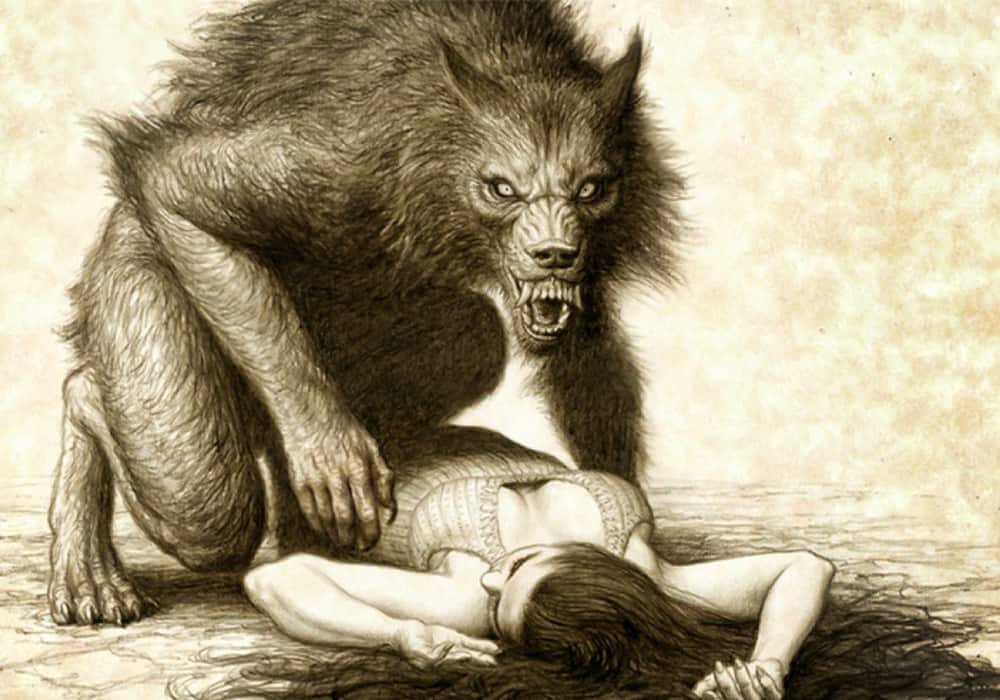When it comes to the world of Mythology, you will hear several tales involving some of the most terrifying creatures to ever exist. Of course, a lot of these mythological creatures have connections to World History too. Many Greeks and Romans swear these creatures existed. Yet they tell them via tall tales, never from personal experience (or truthful personal experience).
In spite of this, you will see several stories that make you scratch your head. How could some be true? Well, it was not just the Romans & Greeks who did this. There are several Native American & African tribes that swear by several creatures from their folklore too. Then you have others that are common myths today that the entire world has heard about.
Did these Mythological Creatures exist or were they just random tales made up that were passed down through the generations? Honestly, you’d be surprised to learn that some actually have a grain of truth behind them. Others come down to misunderstandings of what was going on at the time, however.
Yet others went through what all stories go through, “generational editing.” As stories pass down from person to person, a lot of details go out of the window while other content is added. It might be due to a failed remembrance of the story or they got it mixed up with another. Some just liked to spice up stories a bit too.
Regardless, this article will discuss some of these infamous Mythological Creatures as well as the story behind how they actually came to be. While we cannot cover “every” major creature, we did make sure to use some from several different mythologies from all over the world. Let’s get started!

The Sphinx: Riddle Me This, Riddle Me That
- Greek & Egyptian Mythology
In spite of being a huge statue in the middle of Egypt near their infamous pyramids, the Sphinx was not actually an Egyptian creature at all. Of course, the Great Sphinx was built somewhere between 10,000 to 5,200 B.C. which makes the myth of the character at least one hundred years old or longer beforehand. The Sphinx was notable for being a creature with the head of a woman, wings of a bird, and haunches of a lion.
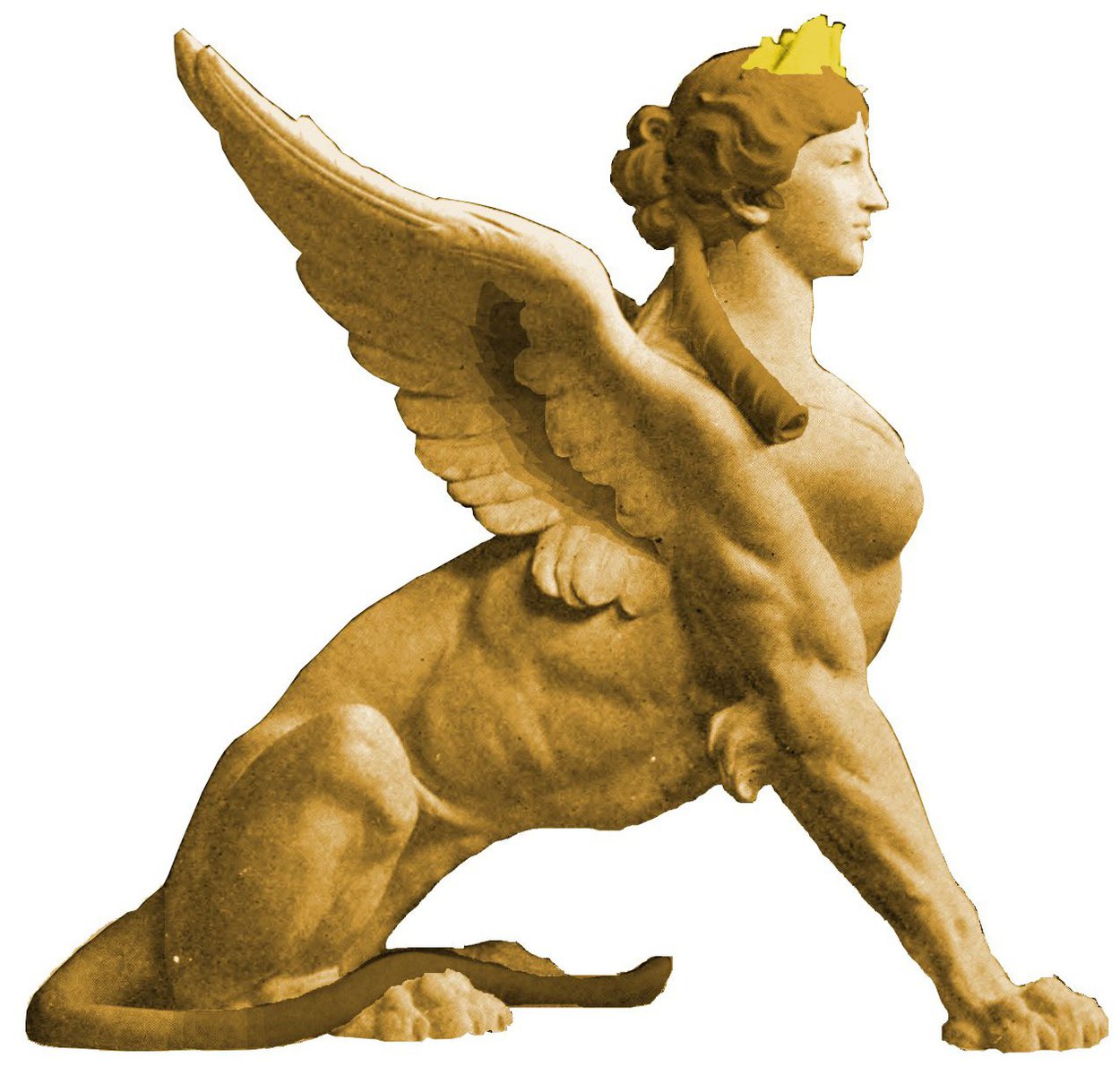
In Greek Mythology, whenever a human came across the Sphinx, it would ask them to answer a riddle. If you could do so, you’d not only go free but at times you might also win something. There are some tales where it kills the Sphinx too. If you answer incorrectly, the Sphinx kills you. In Egyptian Mythology, this creature is actually a man, held as benevolent with impressive strength. Similar to the Greek version, it was used as a Guardian of sorts for Temples.
Where did the creature come from? Technically, it was from the tale of Oedipus. This was about the mythological King of Thebes himself. The thing is, that is the notable Greek telling of the creature but the Egyptian version is clearly far older…which means they borrowed from the older Egyptians. This culture enjoyed connecting animals to humans in their art and stories, even royals wore animal-connecting outfits. The Sphinx was merely connected to that culture, like many others from the time.
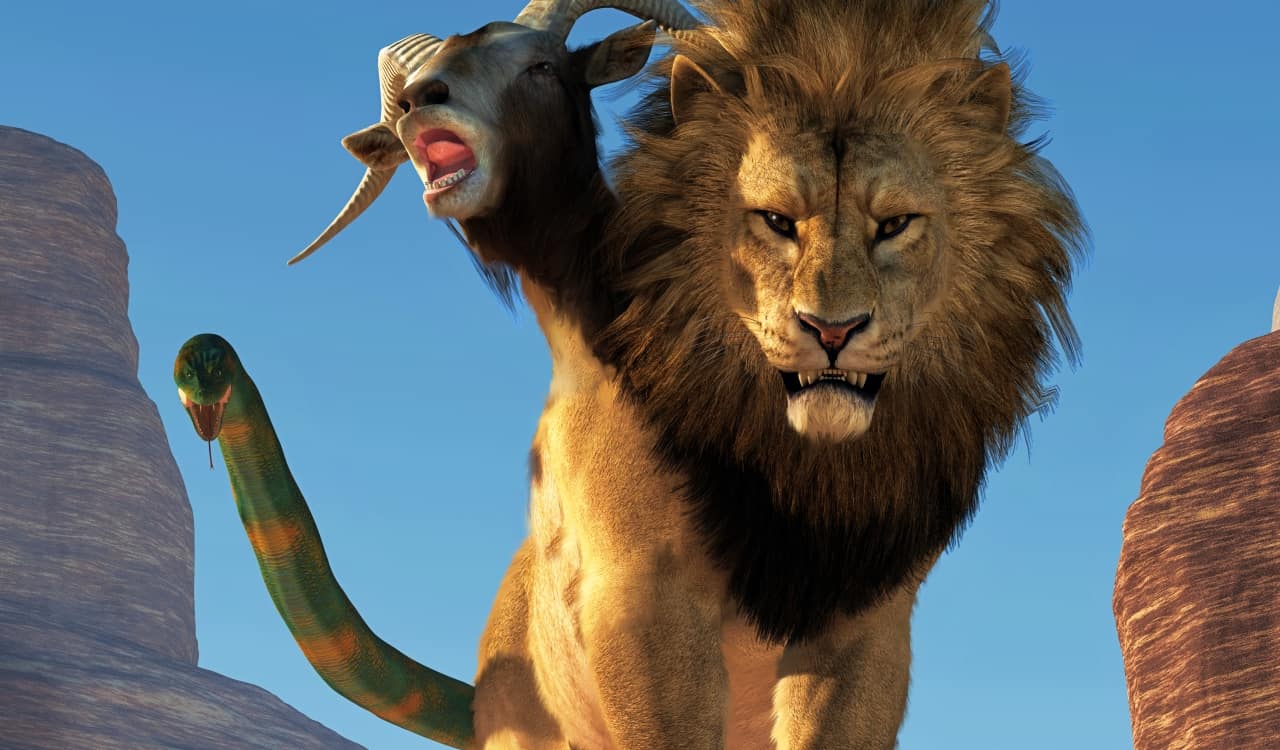
Chimeras: The Potluck Of Mythological Creatures
- Greek Mythology
The Chimera creature could never have existed, but there has been some skepticism. Homer brought up the creature, even described it, in his book, the Illiad. For years, many were uncertain just how much of the story and its sequel The Odyssey, are real or made up. Especially since we’ve discovered many things from the tales have since been found to be relatively accurate. Therefore, Chimeras’ existence might seem crazy but so did other stuff Homer said…until it wasn’t.
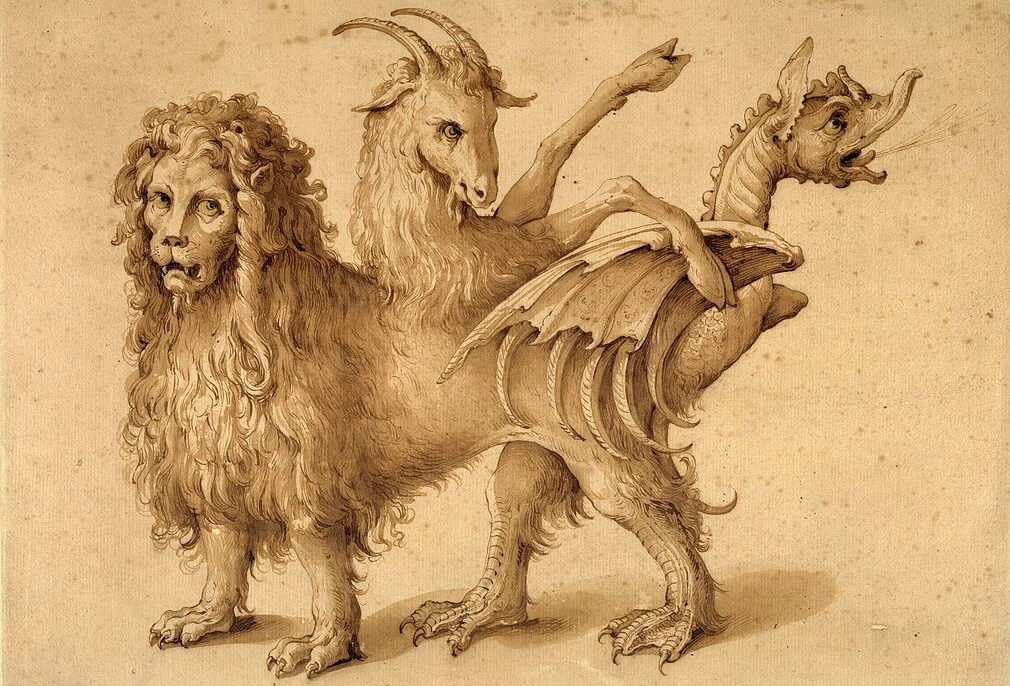
The Chimera was described as a Lion with the head of a goat coming out of its back, a tail with a snakehead on the end, that could breathe fire. It’s apparently related to many other mythological creatures too. When discussed, very few ever bought into this creature as legit or real. However, the idea that it is connected to other plausible creatures makes some wonder about its potential truth.
In reality, it was likely that a person simply decided to write about a Lion, Goat, and Snake coming together. As it was potentially the best thing they could come up with at the time. Several creatures in mythology sound pretty insane, it was just that the Chimera took off in popular culture. Even today, we claim something sounds like a Chimera when it sounds incredibly weird or implausible. This is pretty much why.
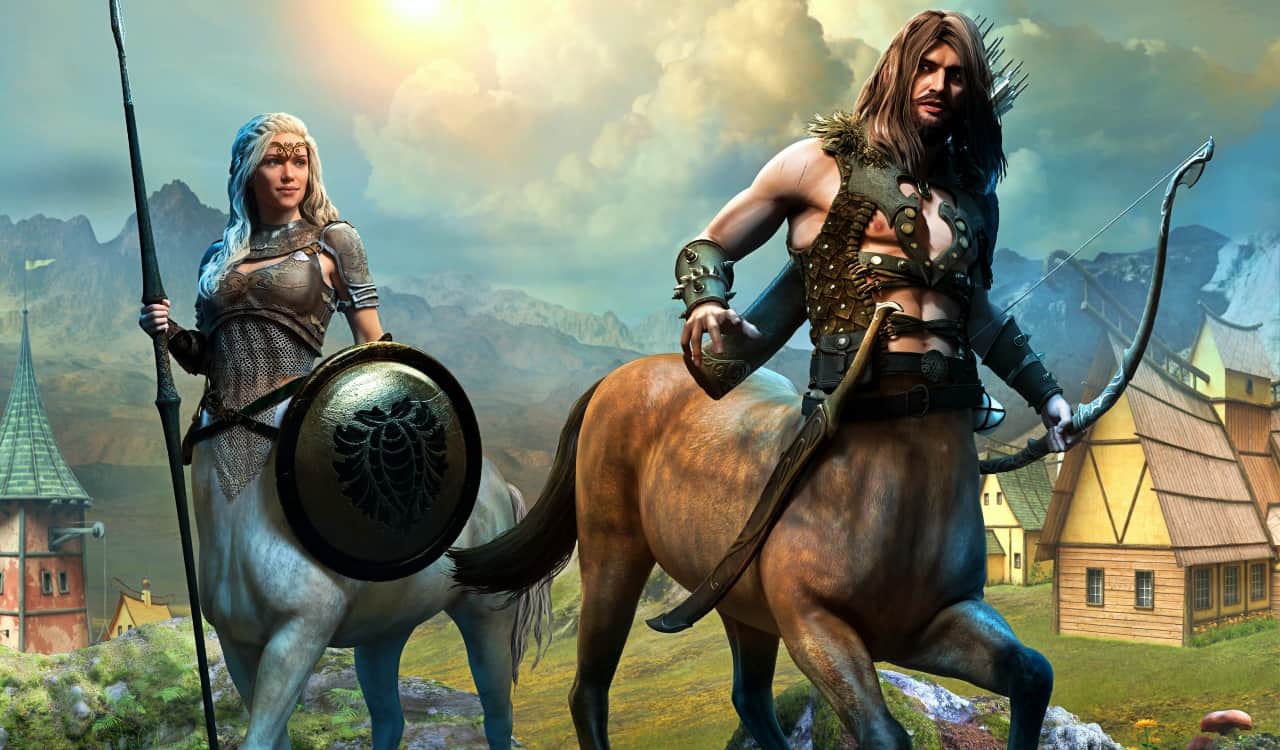
Centaurs: The Secret Of Small Armies
- Greek & Roman Mythology
Centaurs were said to be incredibly majestic creatures that had the lower body of a horse and the upper body of a man. There are some that claim they had horns while others do not. There are even references to female Centaurs at times too. However, this particular creature is heavily connected to Greek & Roman Mythology. You can even see them in some fantasy-driven literature or television/film material.
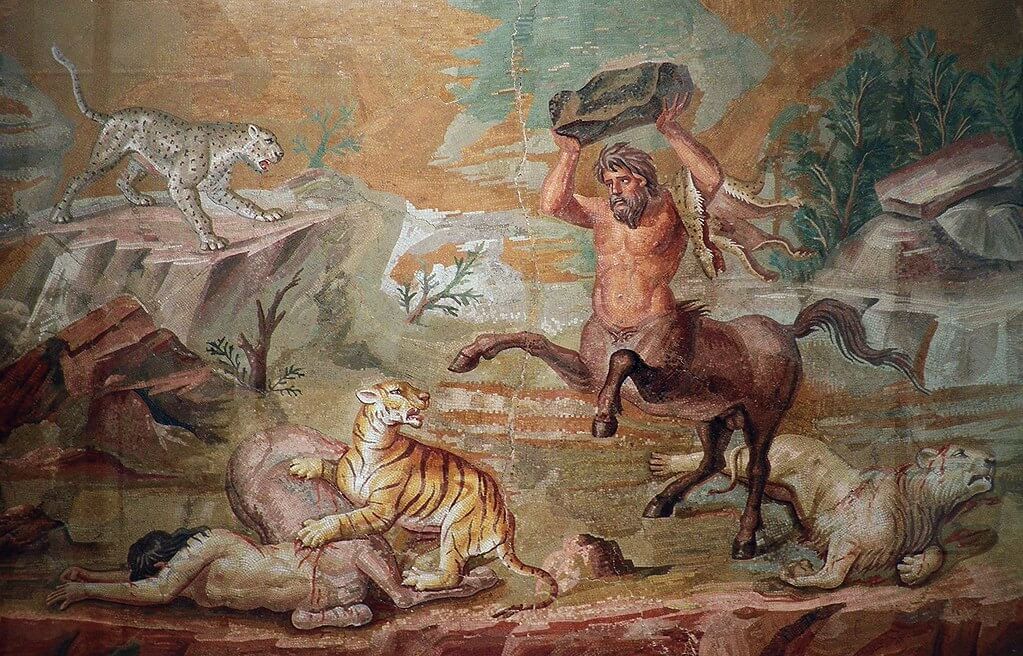
Centaurs were likely created in a few different ways, but there is one very popular way it likely happened. Most armies centuries ago rode horses into battle. Yet there are a few who liked to trick their opponents by playing into potential fears or superstitions. This was especially common throughout the Greek World. At one point, it is said that an army knew spies for their opponents were in the region.
They decided to put fear into their hearts in hopes of getting rid of a much larger enemy force. They got on their horses, covering their lower body with blankets as well as the heads of their horses as best they could. They’d get as far off as they could where the spies would see them partially in shadow and assume the man and horse were connected. Thereby creating the myth of an army of Centaurs. This concept worked for some smaller armies.
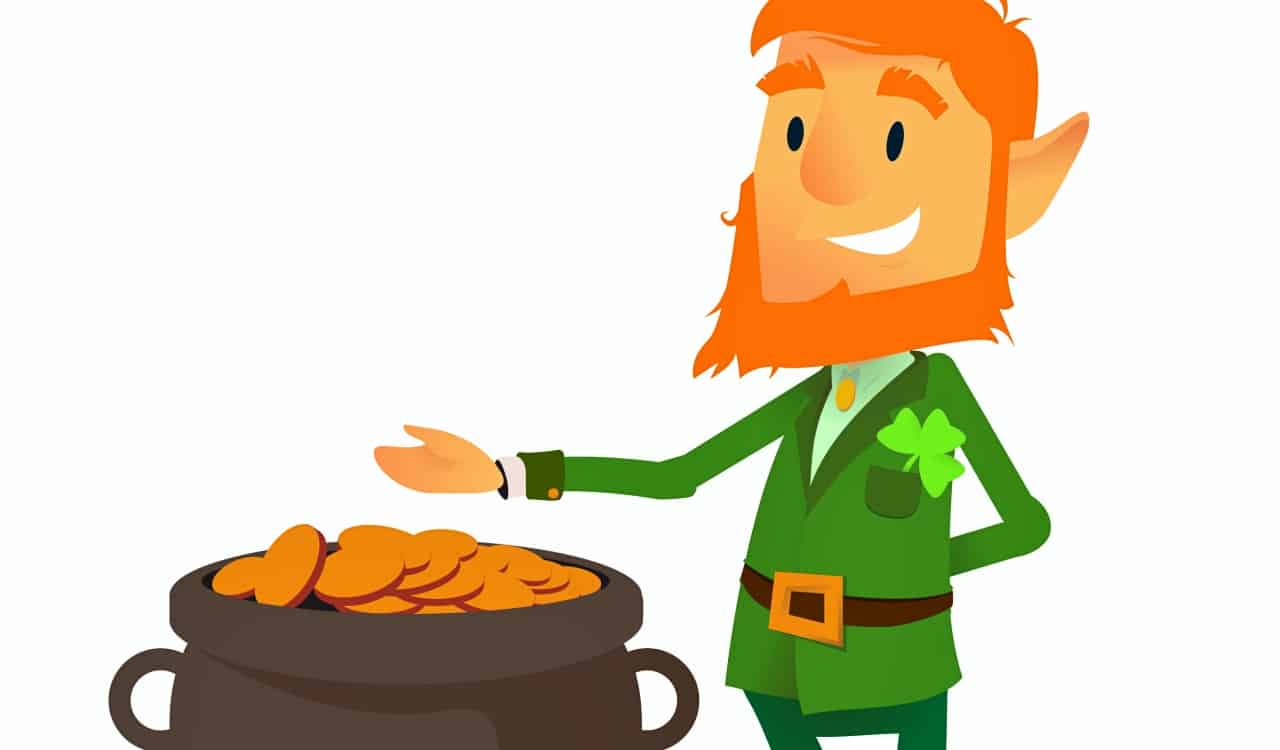
Leprechauns: The Creature That Literature Enhanced
- Irish Mythology
A lot of us do not know the true story behind the true Irish Mythological creature known as Leprechauns. The original version of these creatures in Irish Mythology was actually not really that crazy. They were said to be small people who were primarily known for cobbling shoes and playing practical jokes. The problem is that this changed due to how they were used in literature.
There have been several different spellings of the word “Leprechaun” in English or Middle-English, which resulted eventually in the word we mostly use today. That seems to be where a lot of the problems began. They were used in stories where they were said to be very small, and eventually even connected to the Roman Festival of Lupercalia. This festival was said to have been in play to get rid of evil spirits. That caused the magical portion.

This was only aided by Thomas Dekker’s comedy An Honest Whore, where he describes them as lustful spirits. Eventually, they were connected to gold and enjoyed the idea of hiding it from others. Technically, Leprechauns from Irish Mythology are quite possible as just being little people who made shoes. Of course, also enjoy pranks. It is literature that we need to blame for actually enhancing the creature to the “unreal” status.

Faeries (or Fairies): Human-Like Tricksters With Magical Powers
- Celtic, Slavic, German, English, & French Mythology
While Fairies are technically considered “folklore,” they connect to the “myth” term quite well too. Of course, this is all determined by what stories you’re being told about them. In some Christian-connected mythology, Fairies were considered “demoted” angels. Yet they are also referenced by some as being the people who came before mankind. You might also see them labeled as spirits or deities too.
Most fairies, unlike other mythological creatures, are said to usually have a human-like appearance. This is usually accompanied by magical powers and sometimes an inner desire for trickery. Of course, a lot of this came down to another problem early societies had. Fairies were blamed for things that humans could not understand. If you were hit with a terrible illness or if your child was born with a birth defect, fairies were to blame!
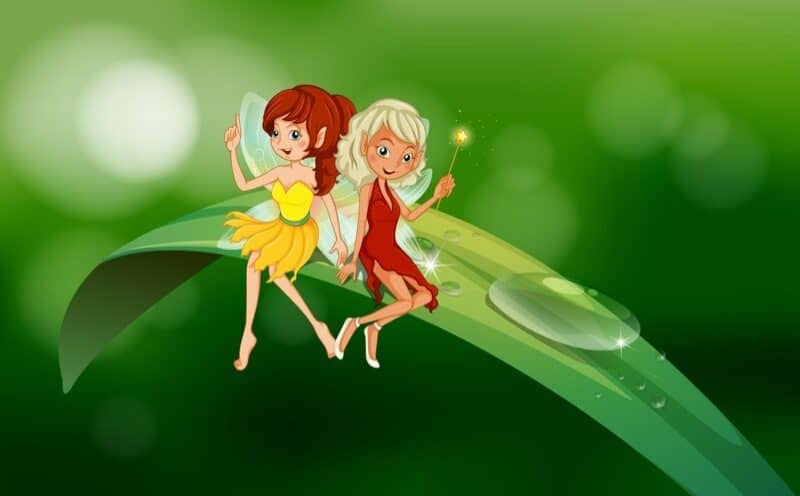
They were also said to have tricked sailors with will-o’-the-wisps. This is a sort of ghost-light that some sea travelers can see at night, causing them to sail toward it and wreck. Yet none of this is factually accurate and only used to blame someone for societal issues. It makes sense to do, but ever since we realized why a lot of stuff happens, Fairies have since been used as just small magical types. Tinkerbell is a good example of this in the modern-day.
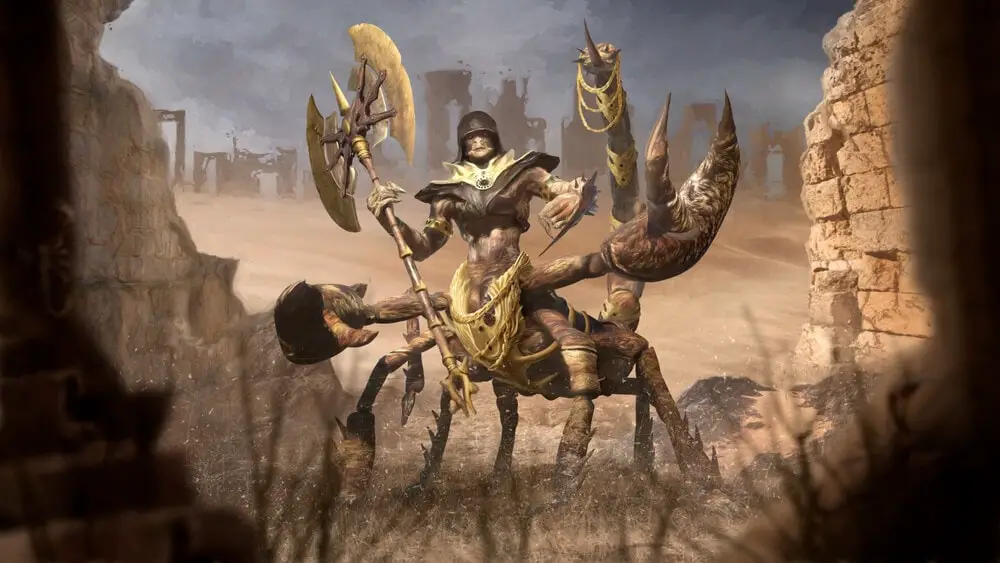
Aqrabuamelu (Scorpion Men): Guarding Us Against The Land of Darkness
- Babylonian Mythology
If you’ve ever read the Epic of Gilgamesh, you probably know what we’re referring to. The story happens to be one of the greatest works of literature known to man and the oldest surviving great work we have. The Agrabuamelu has often been called the Scorpion Man or pluralized as Scorpion Men. In the aforementioned Epic, they are known for standing guard outside the gates of the Sun God Shamash. These mythological creatures open the doors for Shamash to come out each day.
However, as he comes back at night, he’ll return to his home in Kurnugi or “land of darkness.” Their job is to stand guard but they also warn travelers of the many dangers that are beyond their post. Some actually meet Gilgamesh as he travels to meet Utnapishtim. He is a Noah-like figure who builds a ship in preparation for “a great flood.” The myth of these men with the head, arms, and torso of a man with the body of a scorpion is quite impressive.
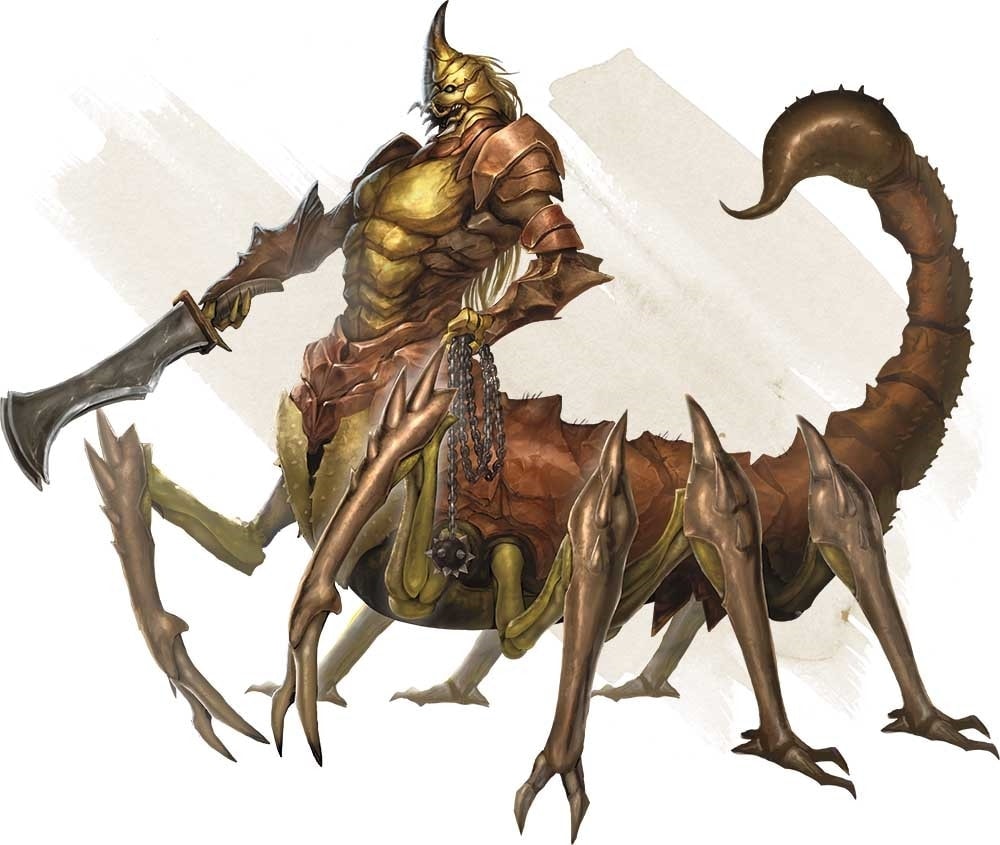

Nemean Lion: Potentially Not As Mythological As You’d Think
- Greek Mythology
Interestingly, a Chimera happens to be at least partially responsible for the birth of the infamous Nemean Lion. This is said to have been a massive lion that terrorized the people of Nemea. It is said that the lion could not be killed by mortal weapons as its golden fur made it nearly impervious to every attack. In fact, the lion’s claws were sharper than the swords and cut through the known armor of the time period. Later, this lion is killed by the Demi-God Hercules (or Heracles) as part of his 12 Labors.
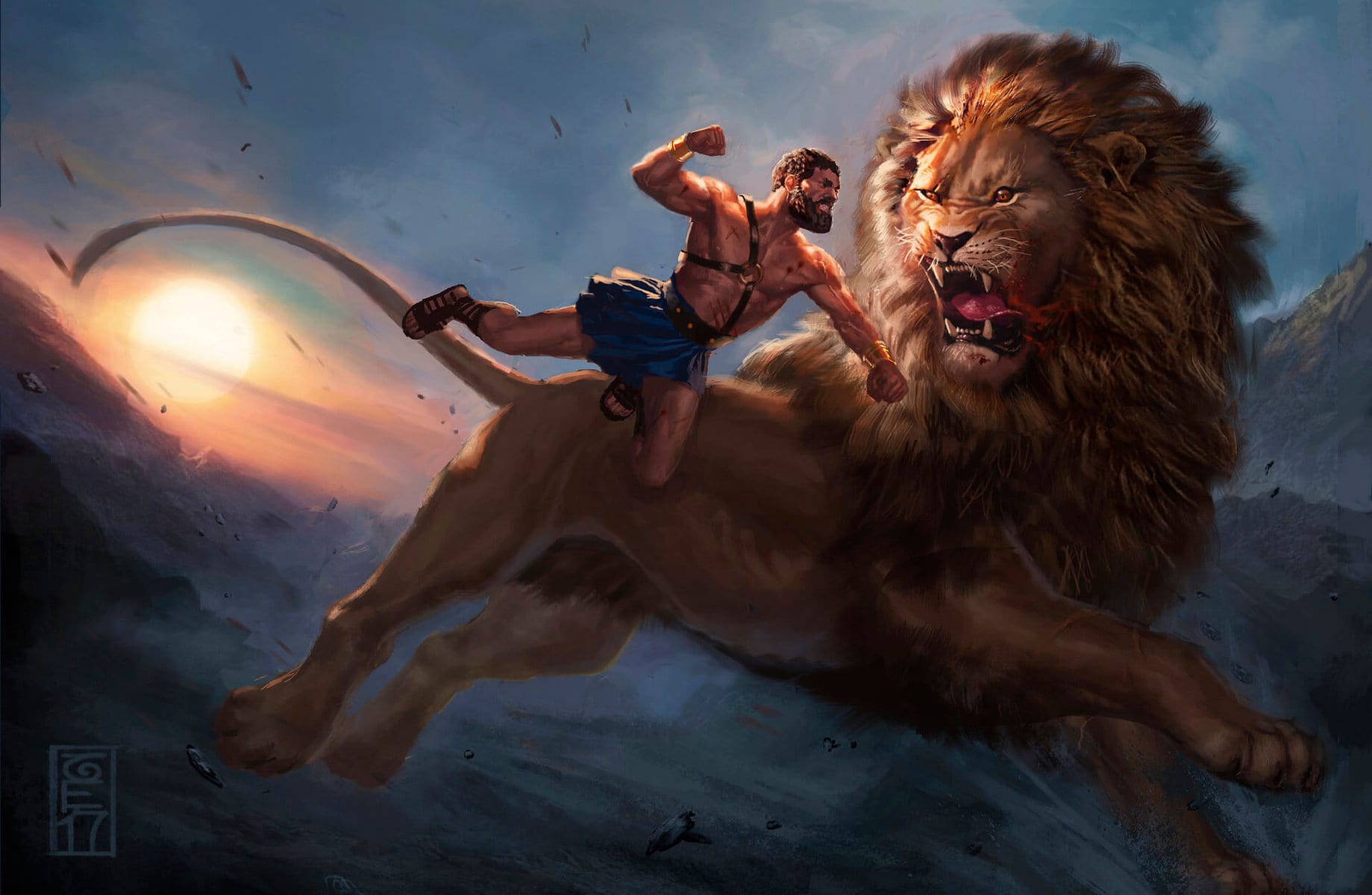
This is potentially one of the most notable mythological creatures yet it’s likely based on a real story. While today the Greeks do not count lions at all as part of their list of animal species native to the area, they used to be. The Asiatic lion was all over Europe for centuries. According to the historian Herodotus, however, the species sadly went extinct. Later, we’d find that lions were likely in several areas of Europe until around 100 B.C.
It is said that his lion species was actually quite a bit larger previously. Both the Pleistocene-Period American Cave Lion & Eurasian Cave Lion were about 25% larger than the modern African lion. The American Cave Lion went extinct just 13,000 years ago. If the Nemean Lion was related to either, it makes sense for it to have been very large too. Meanwhile, lions even today could have ripped through a lot of the armor from the ancient time periods. Thus, this may not be entirely mythological.
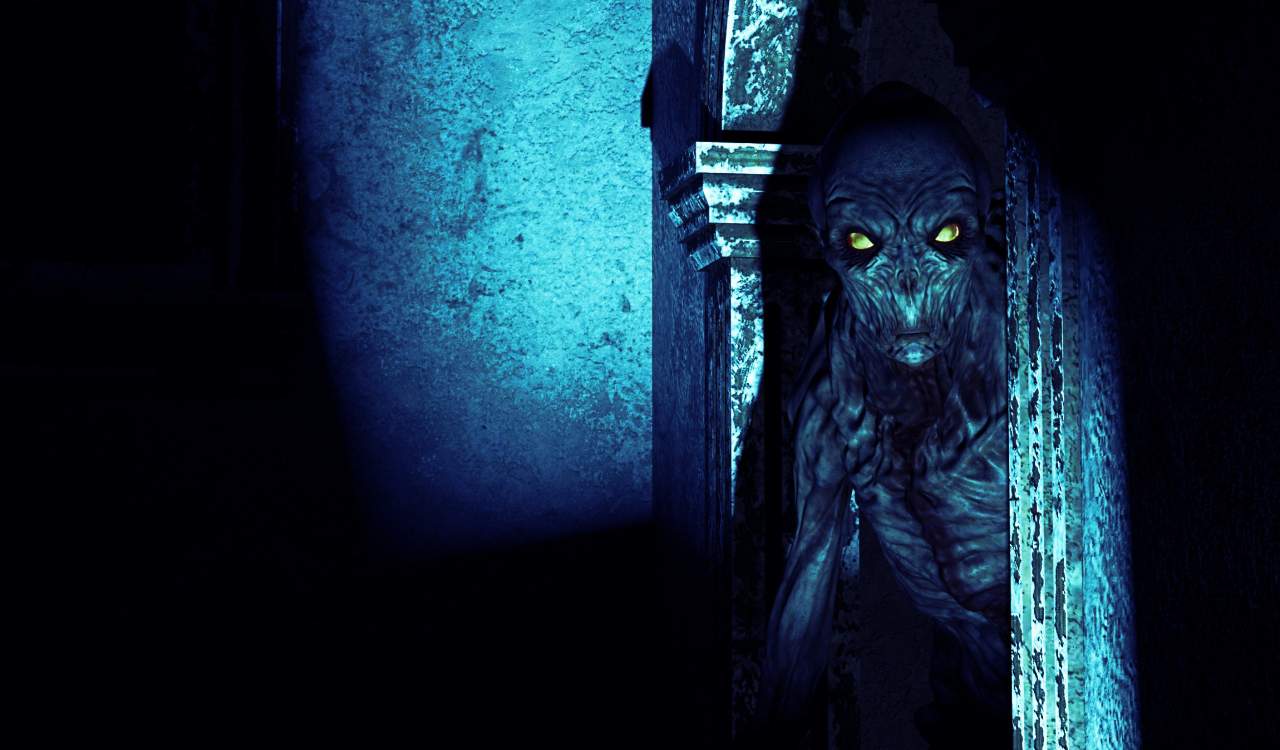
Bogeyman: Hundreds Of Years Of Weird, Terrifying Translations
- Pretty Much Every Mythology
The character of the Bogeyman may not be your technical “creature.” Yet it actually is designed by myth to come across like that. How did this go from a member of the big mythological creatures to what most assume to be a supernatural person of sorts? To understand this, we need to go back to its first technical usage. The word comes from Middle English, derived from the words “bogge or bugge.” This simply meant “something frightening.” In fact, this could be literally anything.
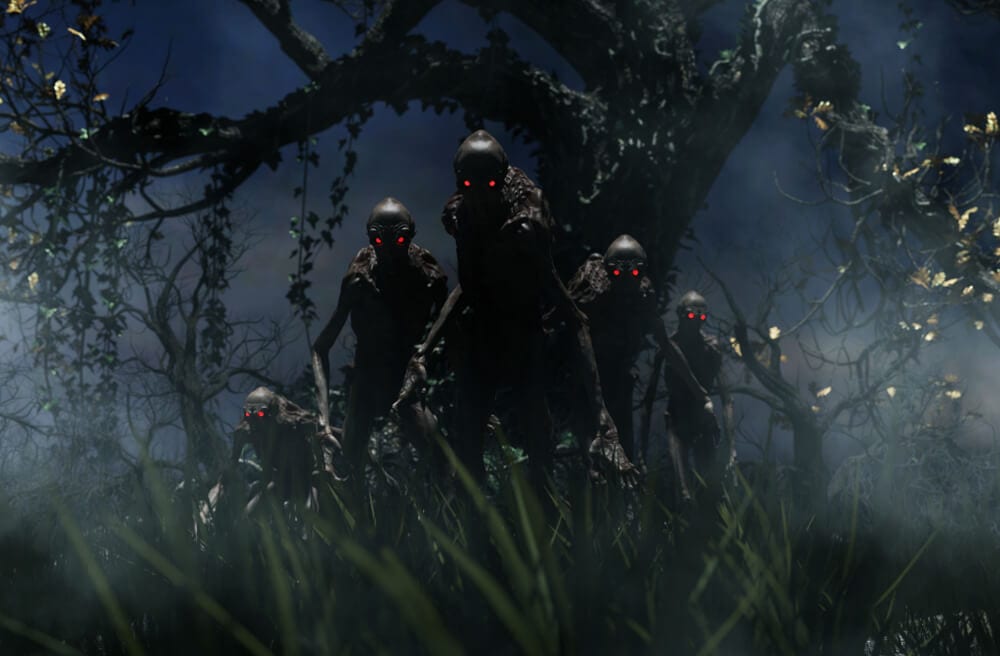
Another origin claims the terms mean “goat” with the Germans connecting it eventually to man, making it into a Goblin-like being. Other Old English translations relate it to Beetles. This translation also gave us a connection to the word “bugbear,” which meant goblin or scarecrow, as well as a bear. The creature would be used as a demon of sorts that is said to eat small children, especially those that misbehaved.
Yet none connects it more to the modern-day than the Bugis, a former group of ruthless pirates in Indonesia that used to attack ships from the British East & Dutch East India Companies. The sailors in these parts became fearful of the “bugi-men,” making the term grow. It would then be connected back to the demon character used to terrify children into doing what their parents asked of them “or the Bogeyman will get them.” Which people still use, in some form, to this day.

Loch Ness Monster: Scotland’s Myth That Still Drives In Tourists
- Scottish-Gaelic Mythology
The creature known as the Loch Ness Monster has been said to be living in the waters of Scotland for hundreds of years. It is quite unlikely a creature could ever last as long as this myth has existed. Yet mythological creatures like this have taken on a rich heritage that connects them with their location. We talk of Nessie and Scotland in the same sentence, which is why the Scots will never want people to stop talking about their monsters.
How did this creature even originate, and who made it into the big deal it is today? The first known mention of any sort of monster near Nessie’s location dates back to the 7th Century from Adomnán’s Life of St. Columba. He writes that he came across men as they buried a man near the River Ness. When he asks what happened, they claimed a “water beast” mauled him and dragged him underwater. Columba sent a man to swim across the river to test this, where the beast came up to him.
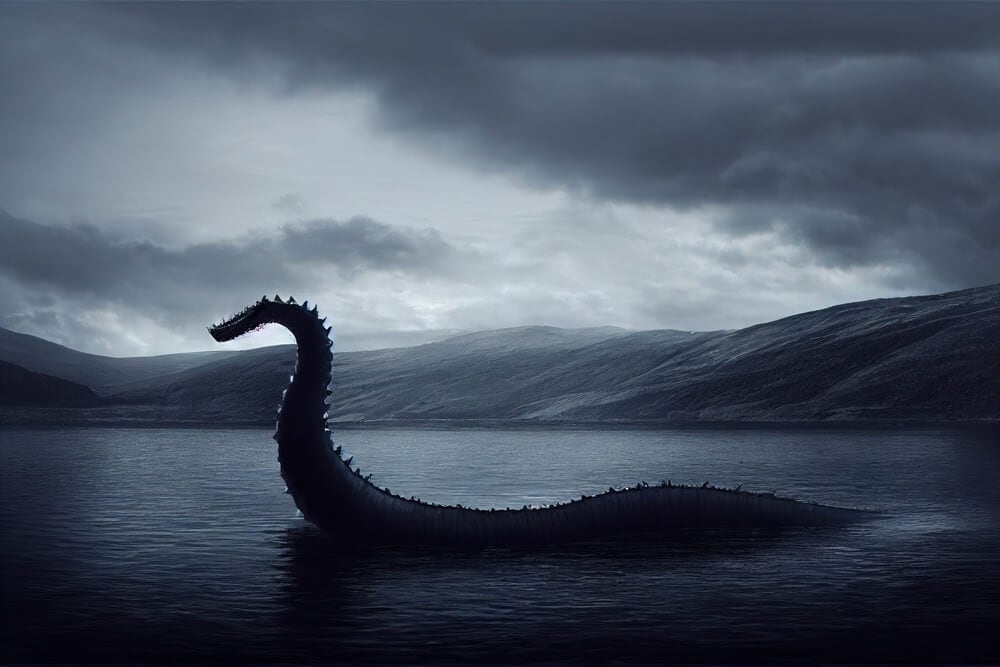
Apparently, it stopped when Columba said “go no further.” It has since taken off from there. The creature people have described seeing for hundreds of years actually does relate to the Plesiosaurs. This is obviously extinct now but some may have lasted longer than we once knew. Similar to what happened with the Wooly Mammoth, which lived 6,000 years longer than their assumed death. It is possible Nessie was a Plesiosaurs someone once saw or it simply inspired the Loch Ness tale.
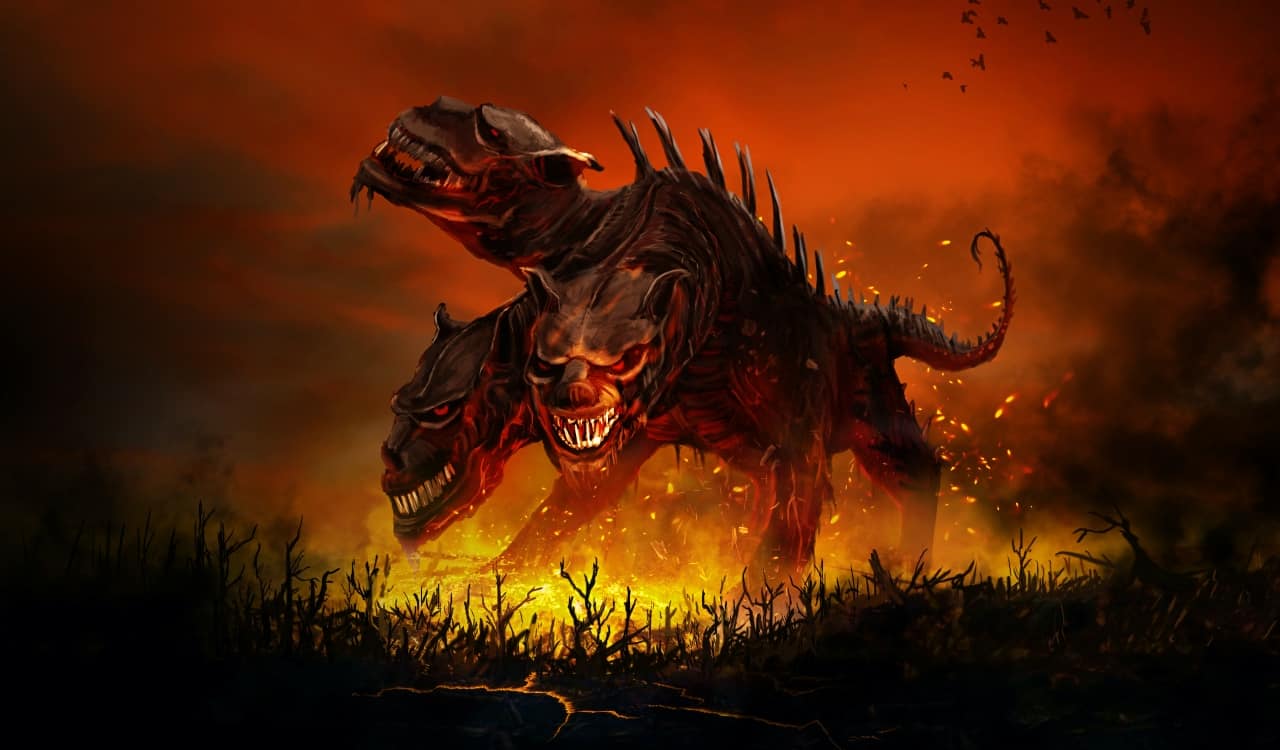
Cerberus: The Hound of Hades
- Greek & Roman Mythology
Cerberus was known as “the hound of Hades.” Therefore, it is likely that any use of the word “Hellhound” in other mythology or folklore likely relates to Cerberus in some way. The dog was said to have been multi-headed (usually around 3), a snake for a tale, as well as snakes coming from other parts of its body too. In some stories, the hound is even able to breathe and spew fire. It is eventually captured by Heracles as part of his 12 Labors, which angers his Uncle Hades.
Cerberus is related to the specific mindset of the time regarding both snakes and dogs. Snakes have been, in some form or another, connected to evil mythological creatures or beings in most cultures. Even in the major three religions, the snake relates to Satan or some form of him. Meanwhile, for quite some time, dogs were connected to this too. It made sense to be a guard for Hades because most cultures still saw Dogs as protectors or guards of the family.
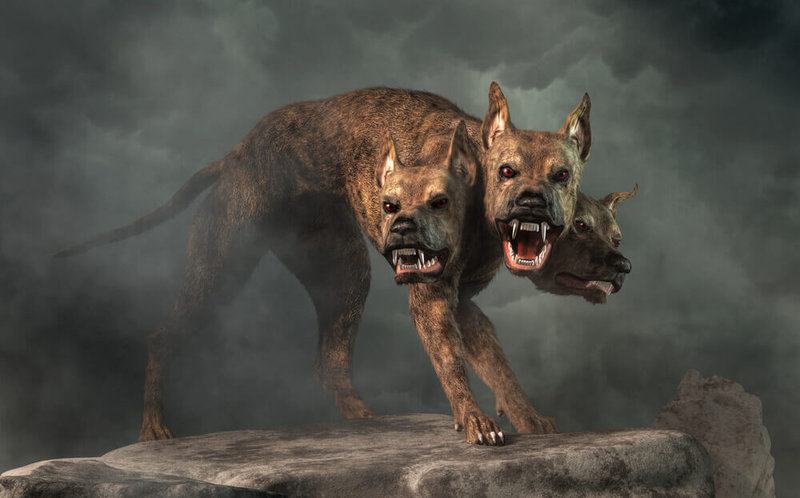
Therefore, the idea of Cerberus guarding the gates of hell made a lot of sense. Dogs were always highly valued by ancient people, but they could be known as killers as well. Especially for people who needed them to help protect or hunt. Therefore, a vicious three-headed dog that guards hell and has snakes all over its body? It was the perfect creation for someone like Hades to utilize. Considering he was supposed to be the Greek version of Satan, of course.
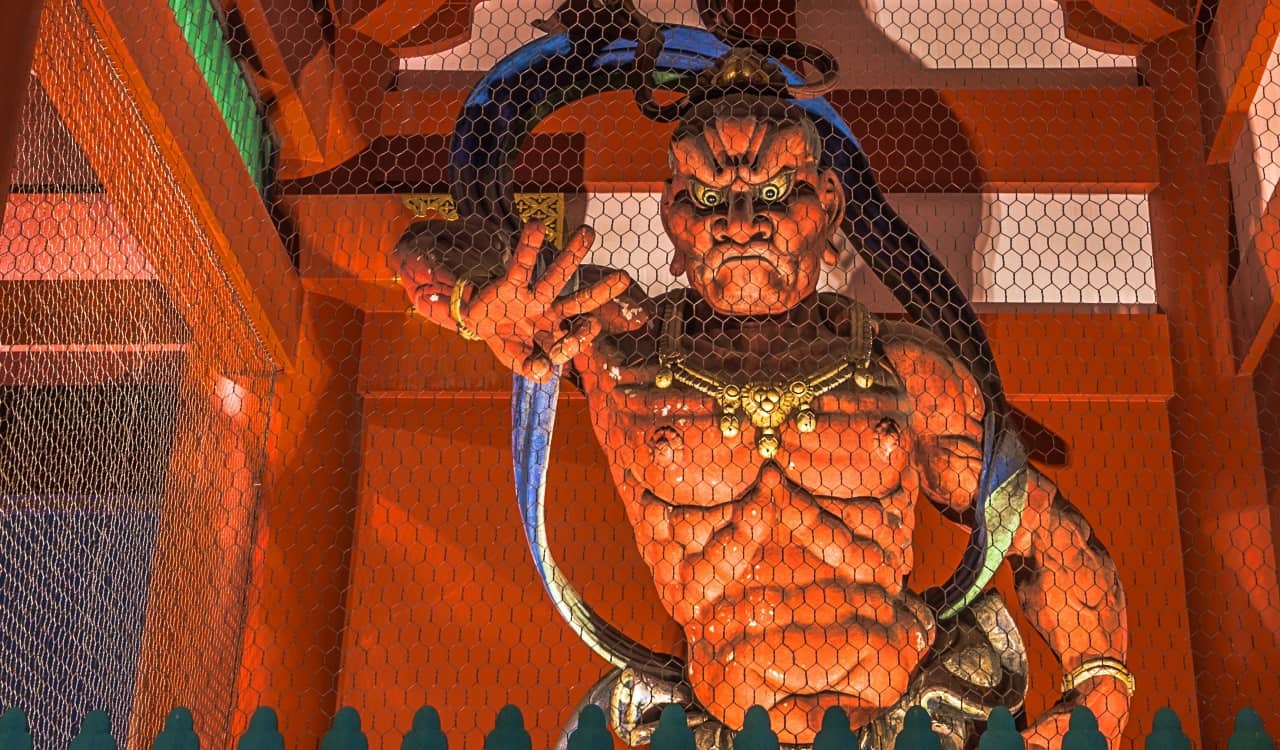
Oni: The Asian Demons Only The Evil Were Turned Into
- Hindu-Buddhist And/Or Japanese & Chinese Mythology
The Oni is likely the version of what we might, today, call a poltergeist. It was said to be a soul or spirit of the dead, but there are different versions. In Japan, it is considered to be an evil specter that looks a lot like a modern demon with horns, hoves, and rough skin. In China, the creature was not always considered to be evil but would look different from mankind. They related it to what we’d just call a ghost nowadays.
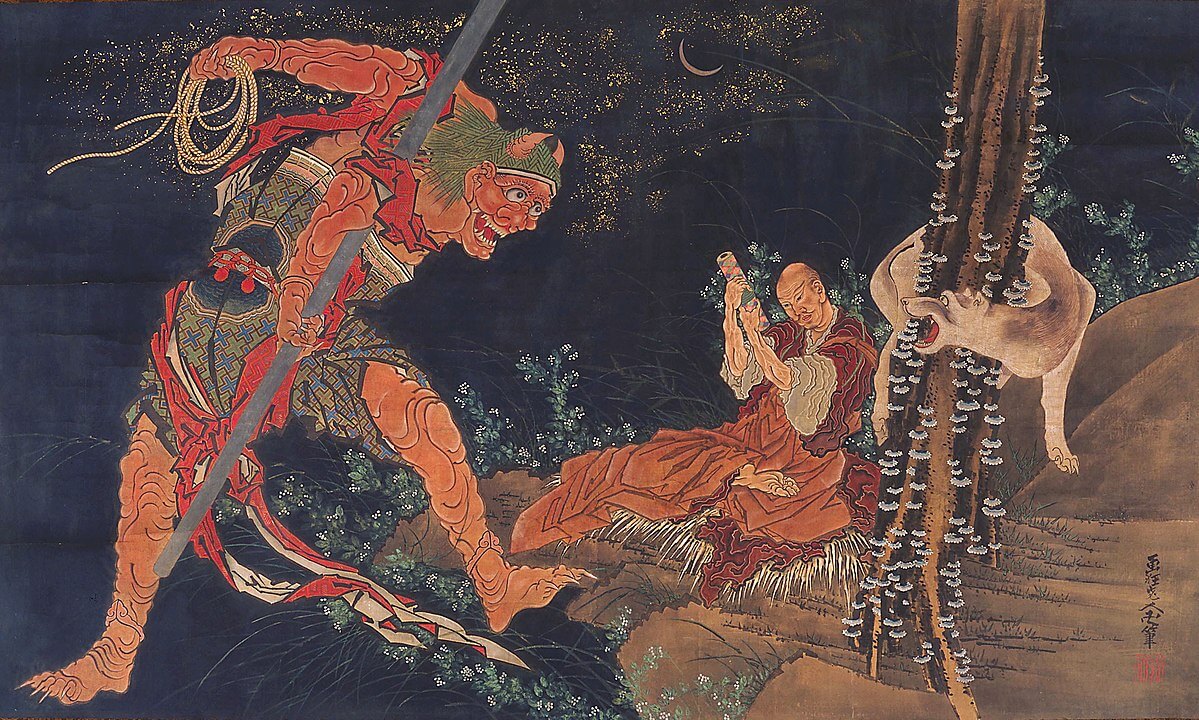
In most cultures, a person who was considered a horrible human being would die and become an Oni. In the Buddhist world, a person with a wicked soul that cannot be rehabilitated would be turned into one. These are said to be the Oni that terrifies humans in most of the later folktales or mythological stories. It is quite likely that a lot of the Oni concept comes from other mythology or religion. However, most feel it comes directly from Hindu-Buddhist mythology.
Most Oni looks like smaller devils, especially the versions we see today, so it’s clear that the Abrahamic Religions had some connection to this. Since Buddhism at the furthest, only goes back to the 5th or 6th Century B.C. and Judaism was in place for far longer, it’s clear the Oni is a stand-in for the wicked after death. The concept of relating horns and hoves to demon-like creatures had been a Judaism concept that was in use among many cultures already too.

Yeti/Abominable Snowman: The Creature That Might Have Lived Centuries Ago
- Tibetan Mythology
Stories surrounding the Yeti also referred to as the Abominable Snowman, go back centuries. The creature is said to have lived in the Himalayan Mountains. There a few versions of the Yeti, which seem to all come together in the version we know about today. While some of the stories are chopped up a bit, we managed to track down the main references. First, it actually comes from the Pre-Buddhist world among the Himalayan people.
The people here, known as the Lepcha at the time, worshipped some type of “Glacier Being.” Apparently, it was thought to be the God of the Hunt. Yet followers of the Bön Religion also believed blood from Mirgod or “wild man” was useful in various mystical ceremonies. The creature for them was said to have resembled that of a “White Ape” that carried a large stone for a weapon. It also made a whistling-swoosh sound, which is the reasoning for why the Mountains have such a sound.
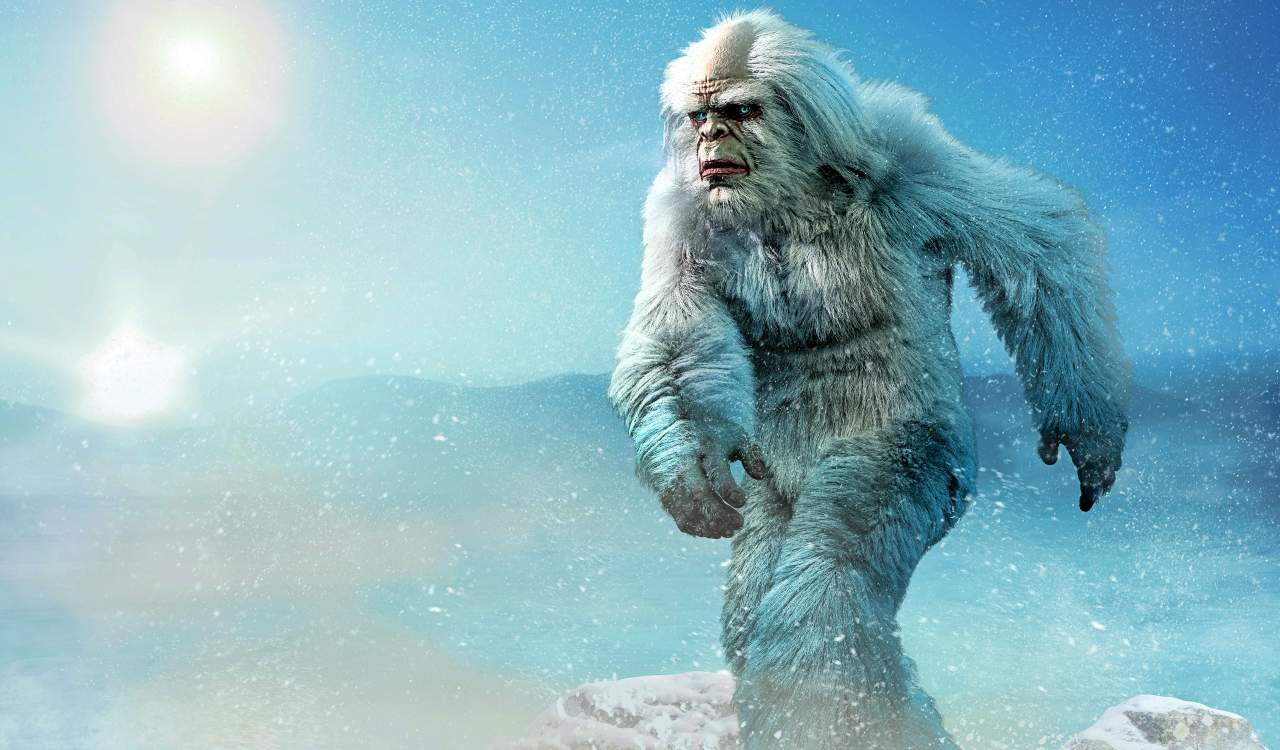
Of course, we know this was the wind. We also know that primates have been all over the world in some form, yet there were some in Tibet. One currently is the Tibetan Macaque. While large, it is not massive. It is quite likely that during the early AD period, when the Earth was a bit warmer, some great apes lived at higher altitudes. Thereby giving us the White Ape that has been referenced. Of course, like always, this took off in myth and the story became bigger as time went on.

Sirens & Mermaids: Beautiful Cold-Blooded Killers Or Odd Lovers?
- Greek & Roman Mythology
The Little Mermaid is likely the movie to thank for mermaids remaining popular. Yet the Disney movie was very different from Hans Christian Anderson’s original story. In the original story, he shows mermaids being far more brutal than we might assume, which takes from mythology. Yet he may have confused Mermaids & Siren. However, mermaids just like to sing to make people fall in love with them. Sirens like to sing to draw in sailors for dinner, where they killed and ate the men.
The Odyssey by Homer is a good story to read about how they were seen in his era. The stories of Sirens and Mermaids have been around for years in mythology, yet there is an understandable reason for them existing. It is likely that years ago, sailors were learning about how the wind might shift from time to time. Yet one area this happened the most was near rocks or caves. The wind, in some of these areas, can come across as a whistling or song-like sound.

While mythological creatures like Sirens or Mermaids could exist…real people could have been living here too. Yet these areas were by no means always safe to jump out into. Sharks have been known to frequent several areas like this. Therefore, it is quite possible that humans stayed in these caves. However, it is far more likely that the wind created a song, and men were eaten by the big dogs of the ocean. This could especially happen in foggy environments, or early in the morning.

Dragons: The Creature Dinosaur Fossils Likely Created
- Numerous Mythologies
Probably the most famous of all mythological creatures we’ll list here is the Dragon. You’ve seen them used in notable fantasy epics like Game of Thrones. While at the same time, they are referenced in a lot of literature. These creatures are known for essentially being large reptiles with the look of a lizard. At the same time, they were said to have scales and could usually breathe & blow fire. Most could even fly. The size of the creatures would get to differ depending on the story.

Did these mythological creatures ever exist in any form? No, the answer is clearly no. However, we can see why some made the mistake of assuming they did. First, we should keep in mind that Dinosaur Fossils have been discovered by ancient people too, dating back to the mid-B.C. periods. If you’re from an ancient era and discover a fossilized Stegosaurus for example….it’s easy to assume this was something more than it truly was. Even fossils of whales could make people assume a lot.
Crocodiles & Monitor Lizards were known to be scary, but some fossils pinpoint a few notable similarities with dinos. Today, we know dinosaurs are closer to birds than reptiles. Yet we cannot deny the reptile-like similarities they have. You combine this with the human brain and we create our own worst fears. We create something out of nothing, but when we have things to work with..look out! A large fire-breathing dinosaur-like reptile? Sounds about right!
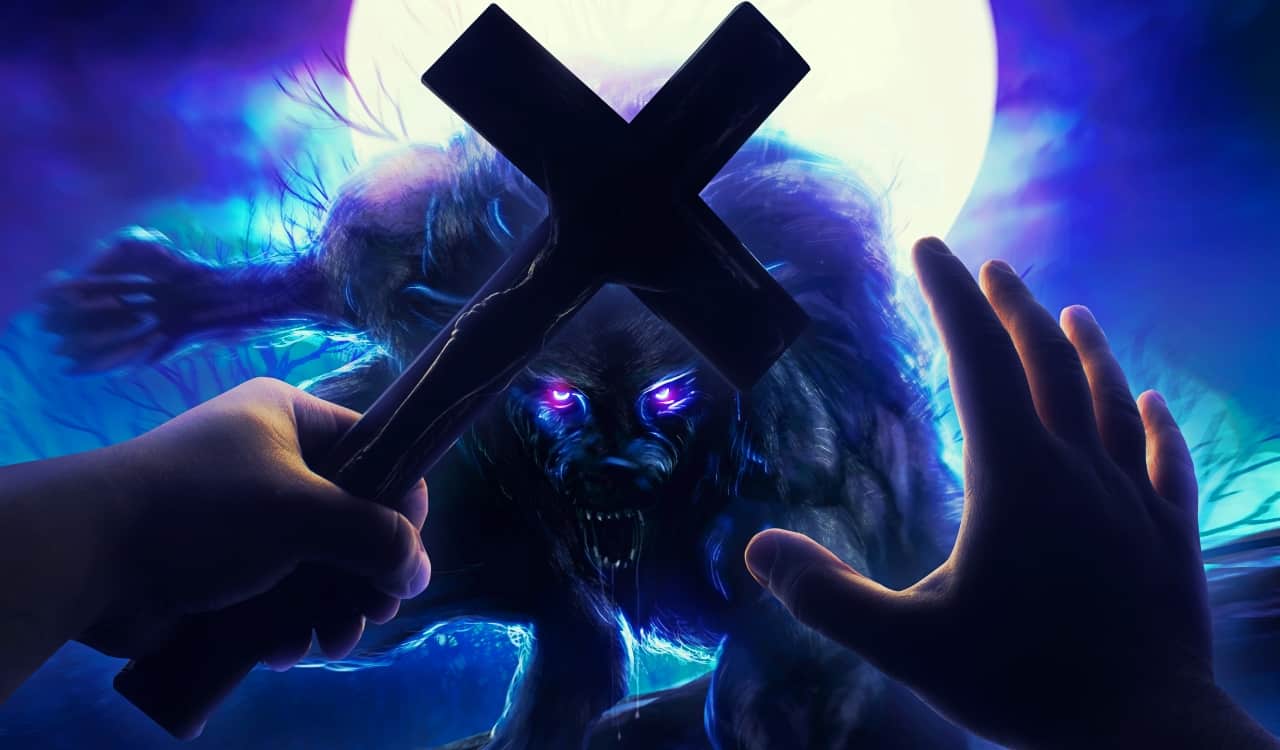
Werewolves: As Close To Real As You’ll Ever Get
- Greek Mythology
Before they were ever used in teen drama series or random YA books, Werewolves were notable in Greek Mythology. Likely the biggest story comes from the Legend of Lycaon. According to the story, Lycaon is the son of the mythological Argos King Pelasgus. Sadly, Lycaon angered Zeus, the King of the Gods, after serving him a meal made from the remains of a sacrificed boy. To punish Lycaon for this, he turned him and all his sons into wolves.
We’d see Werewolves then pop up as half-man/half-wolf later on. In more literature-based stories, we see Werewolves being affected by something that triggers their inner wolf to come out. This might be from a full moon or something similar. Our focus is on the mythological creatures here. We can tell you that they kind of do exist, but not as one might assume. There is a medical condition referred to as “The Werewolf Syndrome.” The condition is actually called Hypertrichosis, however.
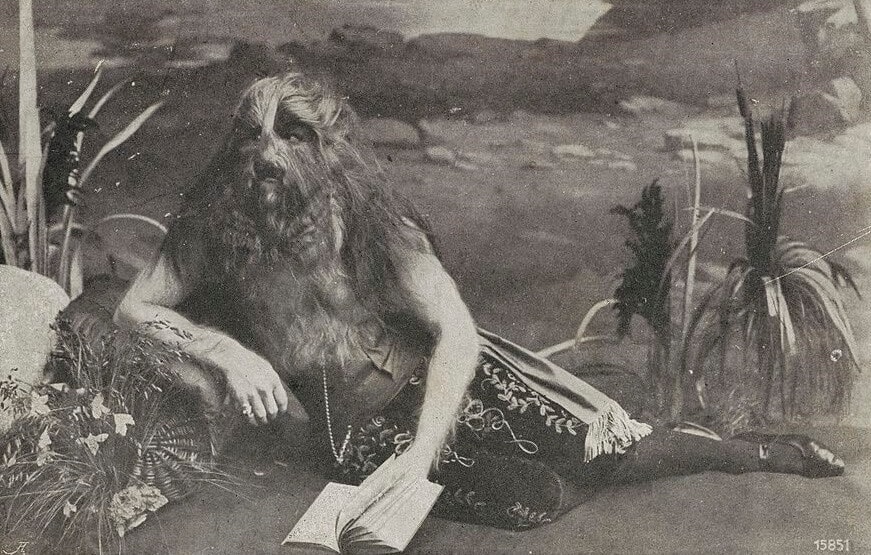
It gives people hair pretty much everywhere. Not like how we see it, but every single place. On top of this, it comes in quite thick for many. Those with a lighter form of the condition look pretty normal, yet those with a terminal version will be covered in dark, thick hair. Some even have different facial structures that can be seen by some as animalistic. Many of these people live among each other and have families…with most children also having the disease.

Unicorns: Some Small Basis In Reality
- Various Mythologies
Unicorns have been referenced in the world of fantasy pretty much since we all can remember. There are several versions that have been referenced. Yet the earliest account of unicorns actually comes from Natural History, believe it or not. While the Greeks never really discussed them in their mythology…unicorns became a staple in other mythologies. Many believe they existed at some point, with several historians referencing them.
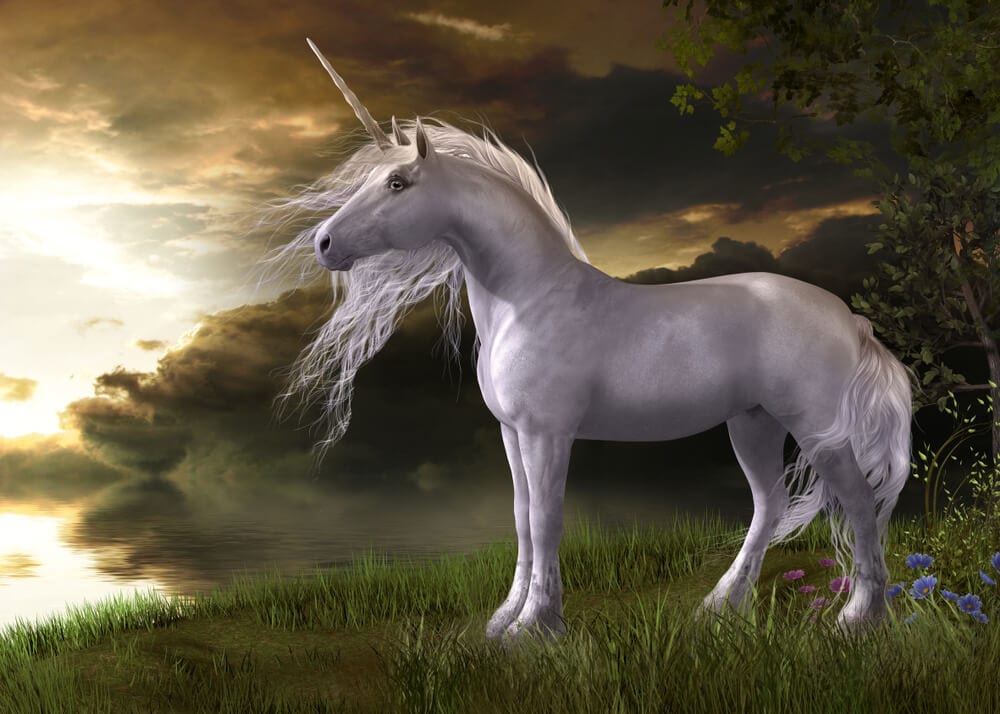
Greeks claimed that Unicorns simply lived in India…considered to be a far-off and strange magical land to the Greeks and early societies. Yet highly-respected historian Pliny the Elder cited seeing one, claiming it to have “the body of a horse, feet of an elephant, tail of a boar, and a three-foot horn in the middle of its forehead.” Yet many feel this description gives us a clue that the Unicorn referenced by Pliny was nothing more than a Rhino.
We know Rhinos lived in Asia for a long time with many sadly dying out. Although anthropologists once discovered a rhino-like pre-historic animal that was about 8,000lbs but was shaped a lot like a cross between a rhino and horse. They named it Elasmotherium sibiricum or “the Siberian Unicorn.” Back in 2016, anthropologists from the area studied the skull of the species and found that it traced back to just 29,000 years ago. Meaning, it would have likely had contact with humans.
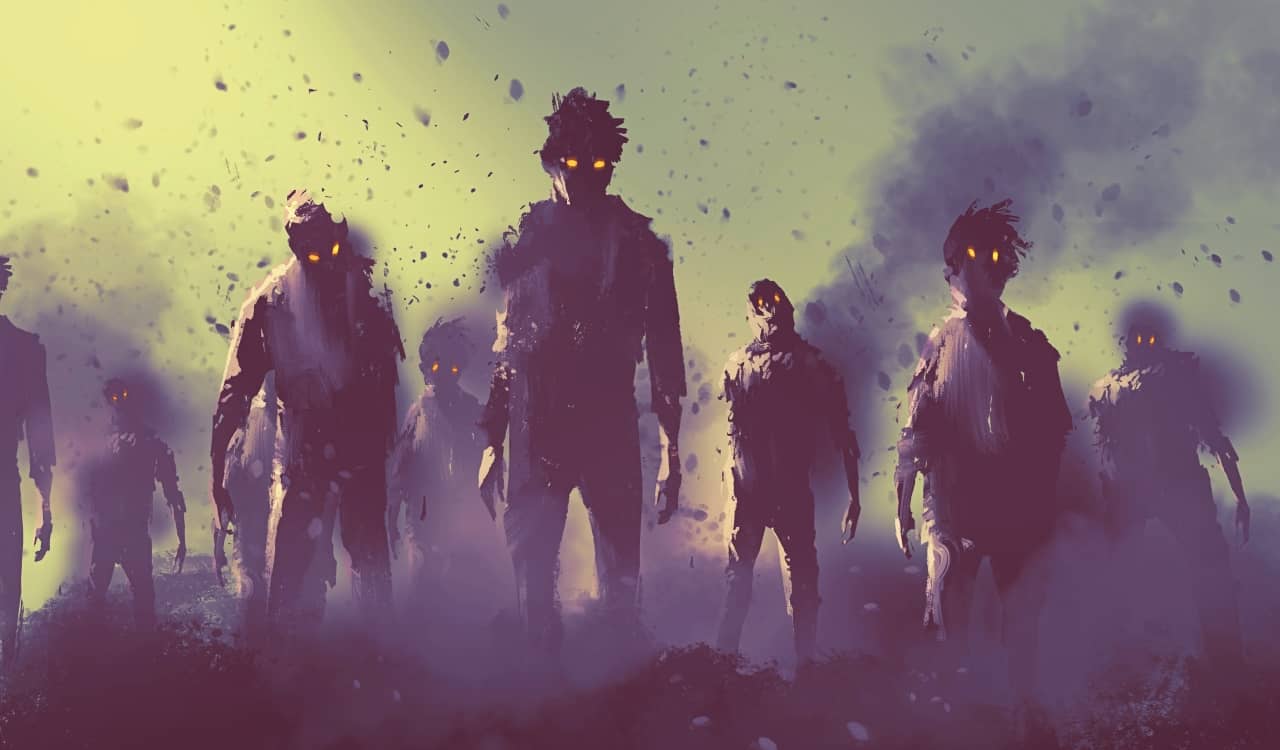
Zombies: Real Mythological Beings That Were Heavily Enhanced Later On
- Mostly Western Mythology
We should preface this by saying that zombies may not sound like creatures to people. However, they were made into mythological creatures by mostly western sources. This includes not just mankind but animals being made into zombies too. It is actually true that a version of zombies did actually exist dating back to roughly between the 16th to 18th Centuries on the island of Haiti. At the time, many of the people populating the island were actually slaves.
The French mostly dominated the territory until Haitians fought for and won their freedom. However, ancient medical practices from West Africa (namely voodoo) came with the slaves. Witch Doctors who practiced voodoo claimed that they could bring the dead back to life and force them to do manual labor for their master and carry out the deeds they wished. This actually did happen, but not like fantasy tells you. Witch Doctors brought people back from the brink of death using Tetrodotoxin.
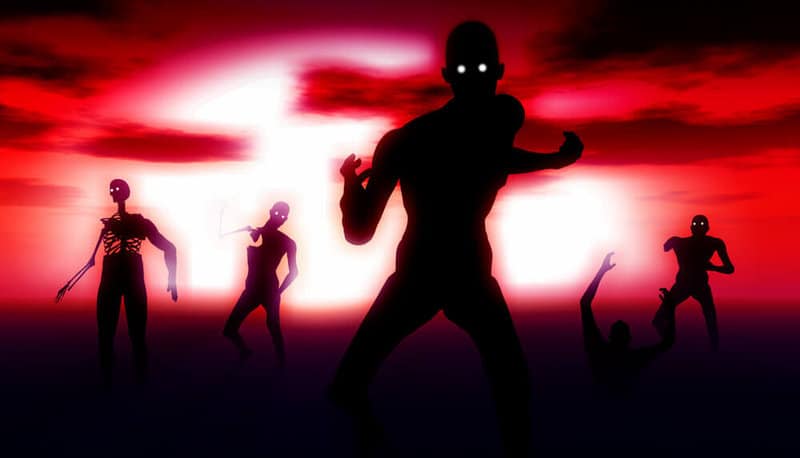
This lowered the heart rate and made people fall into a deep sleep. They would even be buried and dug up later. Some died when this was done but those that lived came out assuming they were dead. Of course, Tetrodotoxin is a neurotoxin and can heavily damage the brain. Thereby making people less combative, taking away speech, memory, and some motor skills. Yet not enough to hurt their slave benefit. Witch Doctors used some but would sell others. It was a perfect scheme for years!

Bigfoot (Sasquatch): How Misidentification Led To The Legend Being Created
- Western Mythology
It is uncertain truly when the Bigfoot mythology began, but we know it is well over 100 years old. It has mostly been a big deal for both American and Canadian legend. To this very day, people still reference seeing Bigfoot all over North America. Of course, most results turn up pretty empty. This is because the creature people are looking for simply does not exist and never really did. The mythology behind Bigfoot has grown over the years, to a point where it has become highly unbelievable.
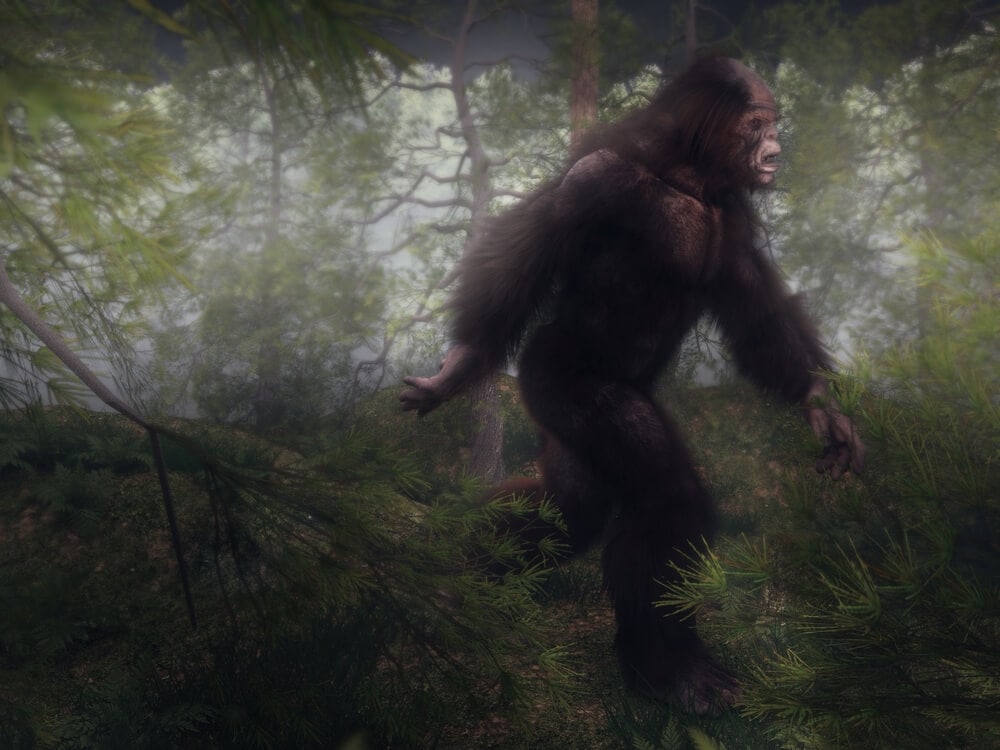
The actual name of “Big Foot” was first used for a Wyandot Chief back in the 1830s. He actually did have a large foot and was quite an imposing figure with incredible strength. Later on, a man named Spotted Elk was given the nickname of Chief Big Foot. Of course, he died during the Wounded Knee Massacre in 1890. The only others with this name were usually just bears and were given the name simply due to how large they were. The press at the time referenced them as “Bigfoot.”
The first bear was killed in 1895 while the other was said to have been active into the 1900s with apparently some form of supernatural powers connected to it. The reason was that people had trouble capturing or killing the creature for decades. Yet this all inspired the mythology of the creature. While mythological creatures like Bigfoot normally connect to the believed appearance…it’s likely that the legend began with a mix-up between the Native American Chiefs & notable large Bears.
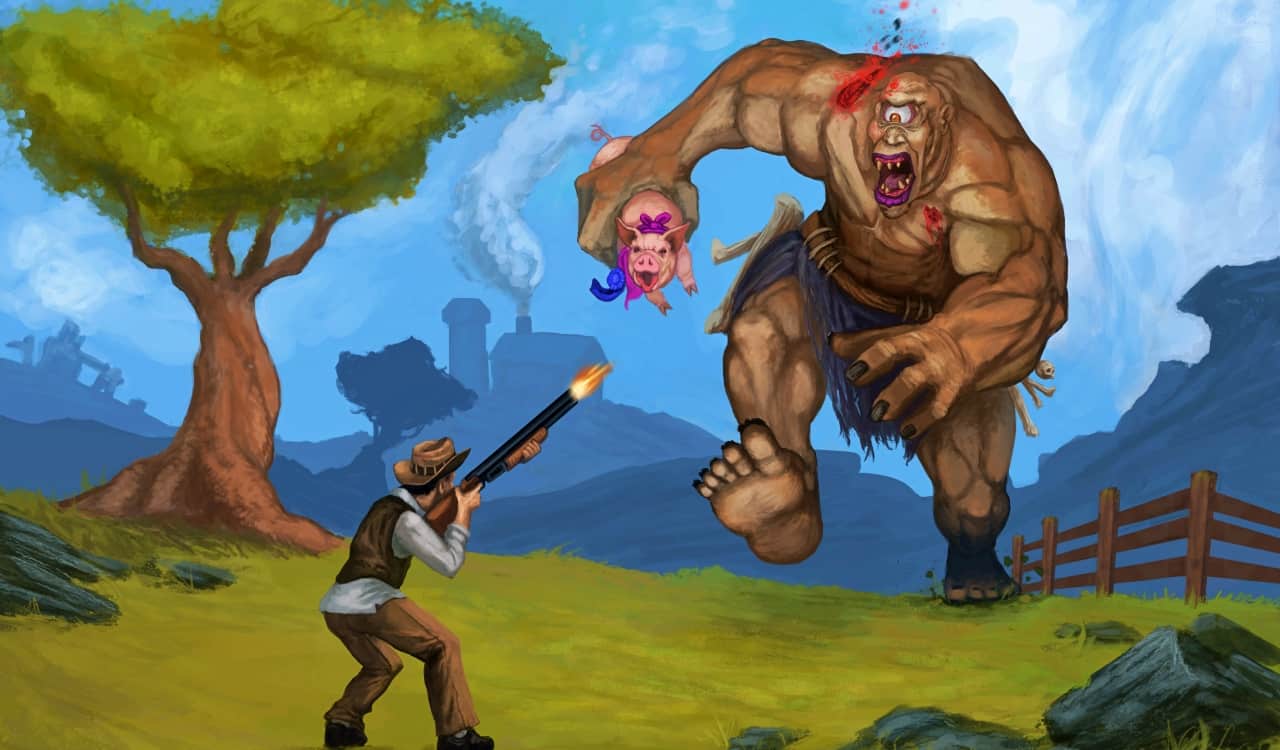
Cyclops: The One-Eyed Super Beings That Were An Aid To The Gods
- Greek & Roman Mythology
It seems that every major mythology has some version of the Cyclops. Yet this all began back in Greek Mythology and later played a big role in Roman Mythology. The biggest stories they are connected to are Theogony by Hesiod as well as The Odyssey by Homer. In the former, there is a group of Cyclops creatures known as Brontes, Steropes, and Arges. They actually made Zeus’ thunderbolt. Meanwhile, in Homer’s story, the creatures are uncivilized shepherds.
They are encountered by Odysseus on his travels. Of course, the other most notable use has to be the Cyclopean Walls of Mycenae & Tiryns. Cyclops are usually referenced as One-Eyed beings that are generally large. Most are unable to have a proper conversation with several grunts in their language. They count as mythological creatures due to being only slightly humanoid, being no better than Great Apes in many cases.
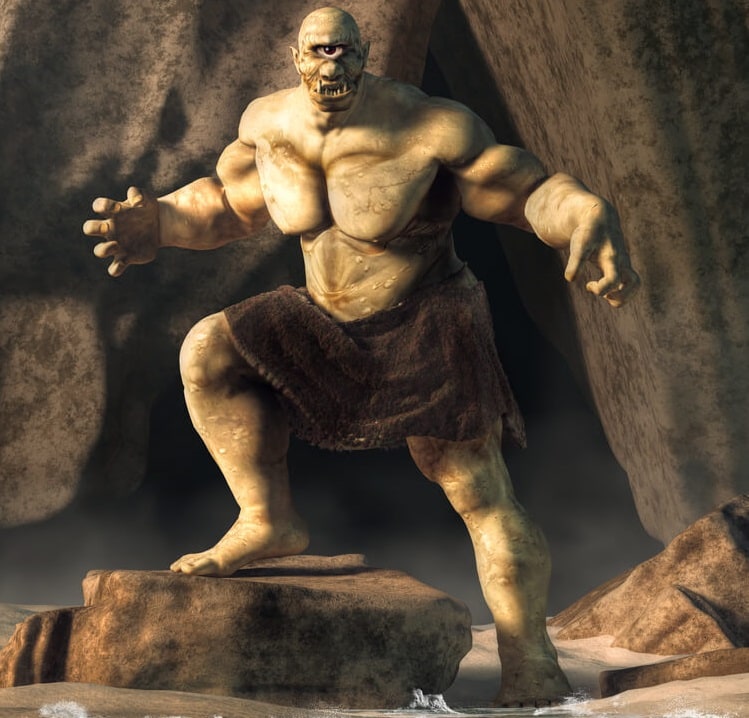
Are stories behind Cyclops creatures true? Not really. While a person can clearly be born with only one functioning eye or lose it due to some accident, that is about it. Therefore, someone might have been in a war and lost an eye…causing him to only have one. Of course, it is not crazy for a person to be large or unintelligent. Therefore, if you add all of that up…then perhaps they could have existed. Yet they would not have been like their mythological counterparts.

Giants: Mythological Creatures That Hold Some Relation To Reality
- Literally Every Mythology Ever
It does not matter what mythology you follow or even what religion, giants likely have a role somewhere in them. They count as mythological creatures mostly due to the stories surrounding them. Most are not really possible while some stories hold some level of truth. Yet most giants were usually centered on war and terror, with many in mythological stories acting as cold-blooded killers. Some even ate the human beings they killed. Stories are quite insane, but there is still some truth.
Do Giants actually exist? Yes and No. Back in the B.C period, people were actually smaller than they are today on average. Yet roughly somewhere between 2,000 to 3,000 B.C. when a lot of mythology began, the height would have been closer to 5 feet flat. Therefore, a person at just 6 feet could be considered gigantic. In the Biblical story involving David & Goliath, it is said that Goliath was a giant. Yet he was roughly between 6’9 and 7 feet tall, which while obviously tall is not gigantic.

Gigantism is behind a lot of this. It’s an issue with the human pituitary gland that causes a person to never really stop growing. Big Show of the WWE had this but a surgery invented when he was young helped him, yet he’s still over 7 feet tall. Andre the Giant, also of wrestling fame, had the disorder but the surgery was not present when he was younger. He died mostly from the disease. Many people could have existed with this disorder, which made some stand out as mythological giants.

